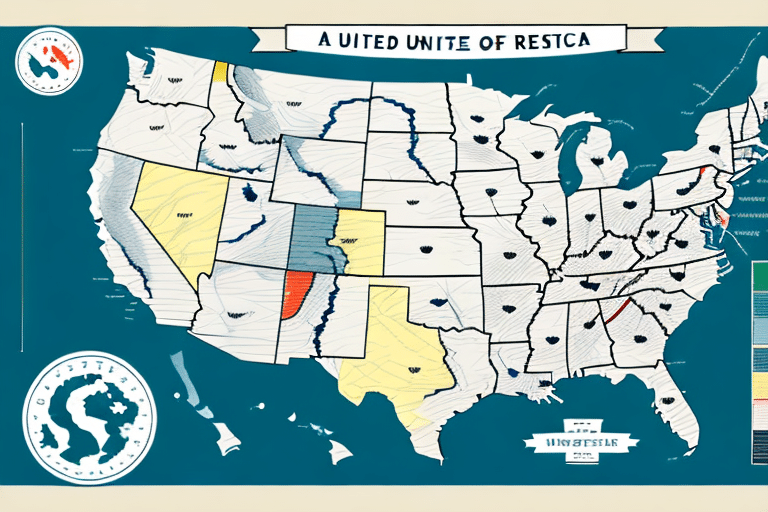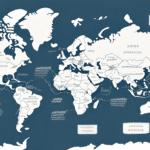Understanding USPS Shipping Zones
Are you struggling to understand USPS shipping zones? You're not alone. This guide provides comprehensive insights into USPS shipping zones and their impact on your shipping costs.
What Are USPS Shipping Zones?
USPS shipping zones are geographical areas that determine the distance between the origin and destination of a shipment. There are a total of 9 USPS shipping zones. The farther the distance between two points, the higher the shipping cost.
USPS shipping zones are determined based on the ZIP codes of the origin and destination. Each zone spans an increasing range of ZIP codes, starting from the origin point. For example, Zone 1 covers the closest area to the origin, while Zone 9 covers the farthest regions.
It's important to note that USPS shipping zones are not the same as states or regions. Two locations in the same state may fall under different shipping zones depending on their distance from each other. This variability means that shipping costs can vary significantly even within the same state.
USPS shipping zones are used to calculate shipping costs for various USPS services, including Priority Mail, Priority Mail Express, and Parcel Select. Understanding these zones can help you estimate shipping costs accurately and choose the most cost-effective shipping option for your needs.
How to Determine Your USPS Shipping Zone
The easiest way to determine your USPS shipping zone is by using the USPS Zone Lookup tool. Simply enter your ZIP code and your destination ZIP code, and the tool will provide the corresponding USPS shipping zone.
Alternatively, you can refer to the official USPS shipping zone chart, which lists the respective zones based on origin and destination ZIP codes.
Remember, accurately determining your shipping zone is crucial to avoid overpaying for shipping. Some USPS services, like Priority Mail Express, offer flat-rate shipping regardless of the zone, making them cost-effective options for long-distance shipping.
The Importance of Knowing USPS Shipping Zones
Understanding your USPS shipping zone is essential for accurately calculating shipping costs and ensuring your customers are charged the correct amount. Since shipping costs are directly proportional to the distance between the origin and destination, knowing your USPS shipping zone allows for quick and precise estimation of shipping charges.
Moreover, understanding USPS shipping zones enables you to make informed decisions when choosing shipping carriers and services, helping you determine the most efficient shipping methods for your business.
Additionally, knowing your USPS shipping zone can help optimize your shipping strategy by identifying areas where you may need to adjust pricing or shipping times. For example, if you frequently ship to a particular zone that is more expensive, you might consider offering free shipping to customers in that zone to stay competitive or adjust shipping times to ensure packages arrive within the expected timeframe without incurring additional costs.
How USPS Shipping Zones Affect Shipping Costs
USPS shipping zones directly impact the cost of shipping. The further the distance between the origin and destination, the higher the shipping zone and the more expensive the shipping cost. For instance, shipping a package from Zone 1 to Zone 2 will cost less than shipping the same package from Zone 1 to Zone 9.
While weight and package size also influence shipping costs, USPS shipping zones remain a significant factor in determining the final charge. Additionally, delivery time is affected by the shipping zone; packages shipped to farther zones take longer to be delivered compared to those shipped to nearby zones.
Strategies to Save on USPS Shipping Costs
Despite the complexity of USPS zone-based pricing, there are several strategies businesses can employ to save on shipping costs:
- Use Flat-Rate Shipping: USPS Priority Mail Flat Rate Boxes offer a flat rate for shipping regardless of distance, which can lead to significant savings for long-distance shipments.
- Consolidate Shipments: Shipping from a location closer to the recipient can reduce the distance and, consequently, the shipping cost.
- Leverage Online Shipping Tools: Utilize tools like the USPS Price Calculator to compare rates and find the best shipping options based on package weight, size, and destination.
- Take Advantage of Discounts: USPS offers discounts for businesses that use their online shipping tools, which can help reduce overall shipping expenses.
Domestic vs. International USPS Shipping Zones
While USPS shipping zones apply to both domestic and international shipments, there are key differences:
- Determination: Domestic zones are based on ZIP codes, whereas international zones are determined by the destination country.
- Pricing: International shipping rates are generally higher than domestic rates.
- Delivery Time: Domestic shipments typically arrive within 1-3 business days, while international shipments can take 6-10 business days or longer, depending on the destination country and customs clearance.
- Documentation: International shipments require additional documentation, such as customs forms and commercial invoices, which can be time-consuming and may incur additional fees.
Familiarizing yourself with international USPS shipping zones and rates is crucial to avoid unexpected costs and delays when shipping across borders.
Best Practices and Common Mistakes in Using USPS Shipping Zones
To maximize efficiency and accuracy in your shipping process, consider the following best practices:
- Regularly Update Location Data: Ensure your origin and destination ZIP codes are current to avoid charging incorrect shipping costs.
- Accurately Weigh Packages: Since USPS shipping costs also depend on package weight and size, accurate measurements prevent overcharging or undercharging.
- Properly Label Special Items: Hazardous materials, fragile items, and perishable goods require special handling. Proper labeling ensures safe and efficient transportation.
Avoid common mistakes such as:
- Assuming uniform USPS rates across all packages without considering weight, size, and zone differences.
- Neglecting the distance between origin and destination, leading to inaccurate shipping charges.
Leveraging Technology to Simplify USPS Shipping Zones
Technology plays a significant role in simplifying the management of USPS shipping zones. Utilizing shipping calculators and rate tools like the ShipStation or ShippingEasy can help calculate accurate shipping costs based on USPS shipping zones quickly.
These tools often integrate with inventory management systems, saving time and reducing the likelihood of manual entry errors. Additionally, automated shipping solutions can streamline the packaging and labeling processes, enhancing overall operational efficiency.
Top Tools and Resources for Managing USPS Shipping Zones
Effective management of USPS shipping zones and optimization of shipping rates can be achieved using various tools and resources:
- USPS Zone Calculator: A free online tool for determining your USPS shipping zone based on origin and destination ZIP codes.
- ShippingEasy: Offers shipping automation software that seamlessly integrates with eCommerce platforms and accounting software.
- USPS Price Charts: Official rate documents published by USPS containing detailed information on pricing, mailpiece dimensions, and maximum weight specifications.
- USPS PostalPro: A free resource offering tips, guides, and various tools to assist businesses in optimizing their use of postal services and products.
The Future of USPS Shipping Zones: Trends and Predictions
The rapid growth of eCommerce continues to influence the evolution of USPS shipping zones. As eCommerce giants like Amazon and eBay rely heavily on USPS for package delivery, the volume of shipments is expected to increase significantly. This growth necessitates scaling up infrastructure, equipment, and delivery networks to handle the increased volume efficiently.
Technological advancements within USPS infrastructure are set to enable more personalized and efficient services tailored for businesses of varying sizes. Enhanced data analytics and automation will likely play a pivotal role in optimizing shipping routes and reducing delivery times.
The Pros and Cons of Using USPS for Your E-commerce Business
Choosing USPS as your shipping carrier for your e-commerce business involves weighing its advantages and disadvantages:
- Pros:
- Lower shipping rates, especially for lightweight packages.
- Flat-rate shipping boxes that offer significant savings compared to standard package rates.
- Convenient parcel pickup options for bulk shipments.
- Cons:
- Limited tracking capabilities compared to some private carriers.
- Slower transit times in certain regions.
- Fewer claim options for lost or damaged packages compared to private carriers.
Assess your business's specific needs and budget to determine if USPS is the right fit for your shipping requirements.
Conclusion: The Importance of Understanding USPS Shipping Zones for Business Growth
Grasping the intricacies of USPS shipping zones is crucial for businesses aiming to grow while maintaining efficiency in their shipping processes. By understanding your USPS shipping zone, you can accurately estimate shipping costs, negotiate better rates, and identify savings opportunities.
Leveraging technology and utilizing resources like shipping calculators and rate tools can simplify the entire shipping process, saving time and reducing errors.
While USPS offers affordability and convenience, it's essential to evaluate its pros and cons in the context of your business needs to make informed decisions that support your growth strategy.






















